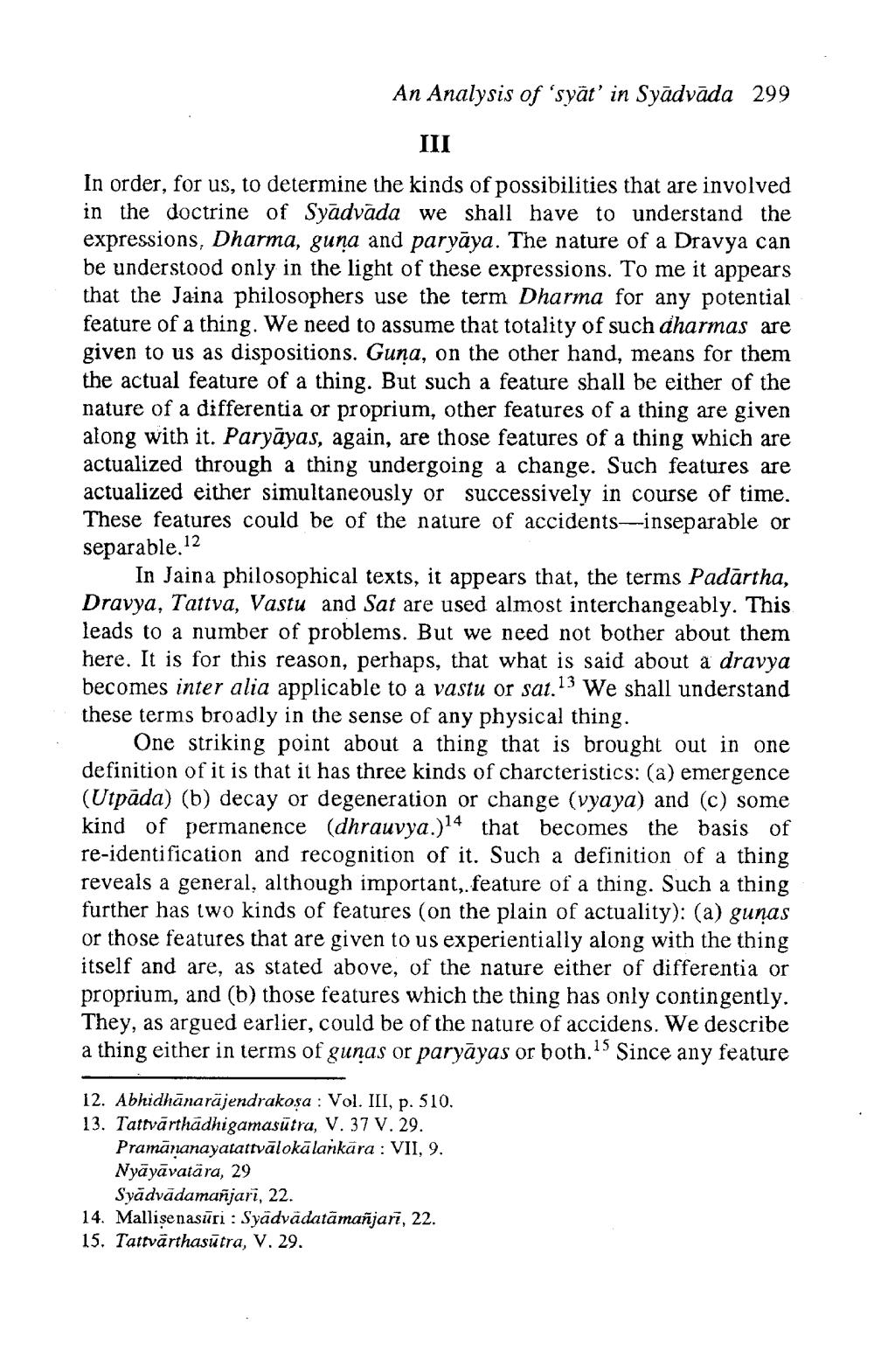________________
An Analysis of 'syāt' in Syādvāda 299
III
In order, for us, to determine the kinds of possibilities that are involved in the doctrine of Syadvada we shall have to understand the expressions, Dharma, guna and paryāya. The nature of a Dravya can be understood only in the light of these expressions. To me it appears that the Jaina philosophers use the term Dharma for any potential feature of a thing. We need to assume that totality of such dharmas are given to us as dispositions. Guna, on the other hand, means for them the actual feature of a thing. But such a feature shall be either of the nature of a differentia or proprium, other features of a thing are given along with it. Paryāyas, again, are those features of a thing which are actualized through a thing undergoing a change. Such features are actualized either simultaneously or successively in course of time. These features could be of the nature of accidents--inseparable or
separable. 12
In Jaina philosophical texts, it appears that, the terms Padārtha, Dravya, Tattva, Vastu and Sat are used almost interchangeably. This leads to a number of problems. But we need not bother about them here. It is for this reason, perhaps, that what is said about a dravya becomes inter alia applicable to a vastu or sat.13 We shall understand these terms broadly in the sense of any physical thing.
One striking point about a thing that is brought out in one definition of it is that it has three kinds of charcteristics: (a) emergence (Utpada) (b) decay or degeneration or change (vyaya) and (c) some kind of permanence (dhrauvya.)14 that becomes the basis of re-identification and recognition of it. Such a definition of a thing reveals a general, although important, feature of a thing. Such a thing further has two kinds of features (on the plain of actuality): (a) gunas or those features that are given to us experientially along with the thing itself and are, as stated above, of the nature either of differentia or proprium, and (b) those features which the thing has only contingently. They, as argued earlier, could be of the nature of accidens. We describe a thing either in terms of gunas or paryāyas or both.15 Since any feature
12. Abhidhānaräjendrakosa : Vol. III, p. 510. 13. Tattvārthädhigamasutra, V. 37 V. 29.
Pramānanayatattvālokālankāra : VII, 9. Nyāyāvatära, 29
Syādvādamañjari, 22. 14. Mallisenasūri : Syadvadatāmañjari, 22. 15. Tattvārthasūtra, V. 29.




